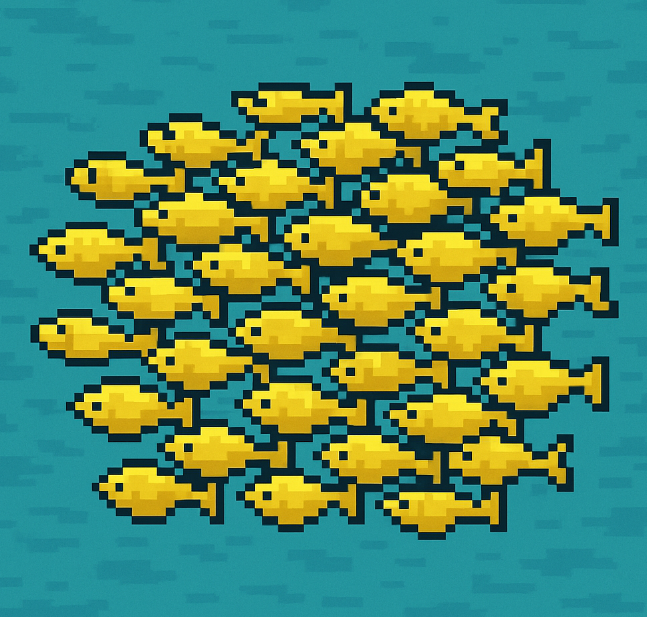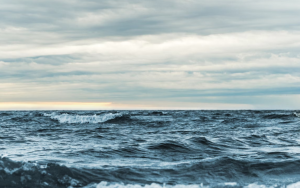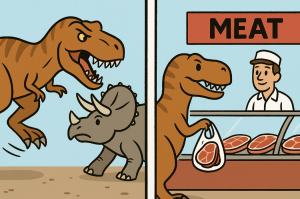
How Big Fish Groups Outsmart Predators—Fast
A single fish is fast, but a crowd of 300,000 fish might just be brilliant.
In the bubbling, sulfur-rich rivers of southern Mexico, sulfur mollies—tiny, silvery fish—face a daily game of survival. Above them? Hungry birds. Below? Low oxygen waters. But what scientists just discovered about these fish will make you rethink what it means to be “just part of the group.”
Turns out, there’s real brainpower in numbers.
When One Beak Can Mean Death
Picture this: You’re a sulphur molly hanging out near the water’s surface, gulping at the oxygen-rich top layer of your steamy, sulfur-saturated home. Out of nowhere, something darts by—a shadow, a blur, maybe a breeze. Is it a predator? Or just a bird passing overhead?
If you guess wrong, you waste precious energy diving. If you don’t react and it was a predator, well… good luck.
Now imagine you’re not alone. You’re in a crowd—tens or even hundreds of thousands of fish, all packed together like a shimmering aquatic flash mob. Could that crowd help you make better decisions?
Turns out, yes. And not just better—faster, too.
Smarter Together: The Sulphur Molly Advantage
In a wild field experiment, scientists studied how shoal size affects decision-making when birds attacked (or didn’t). The key predator? The great kiskadee, a sneaky bird whose attack looks almost identical to a harmless flyby.
Here’s what they found:
- Larger fish shoals were better at detecting real threats—they correctly identified actual attacks more often.
- They didn’t fall for fakes more often. False alarms stayed steady, no matter how big the group was.
- Big groups reacted faster, sometimes cutting their decision time in half.
Let that sink in. Bigger groups not only made better decisions—they made them quicker. No trade-offs. Just sharp, collective judgment in action.
How Do They Do It?
So how exactly do fish in these mega-shoals make the right call?
It’s not like they vote or talk it out. But scientists suspect that sulphur mollies use something like a “quorum system.” Think of it like social radar: if enough nearby fish dive, others quickly follow, triggering a wave of action across the group. The bigger the group, the more likely someone catches the first clue—and then the whole team locks in.
It’s like a biological version of crowdsourcing… except the stakes are sky-high, and the timeline is milliseconds.
Even more amazing: These fish live in harsh environments where diving takes a serious toll. Every false alarm costs energy—and in their oxygen-poor habitat, that can be dangerous. So they’ve evolved to get it right, balancing caution and efficiency like champs.
Lessons from the River
This isn’t just a fish thing. Birds, ants, even human crowds show similar behavior. But this is one of the clearest real-world examples of a natural group solving two major problems at once:
- Separating signal from noise (Is it danger or not?)
- Balancing speed and accuracy (How fast should we act?)
Normally, improving one makes the other worse. But in this case, large groups sidestepped that tradeoff. They made better decisions faster—a rare combo in nature.
Why This Matters (Even If You’re Not a Fish)
This study isn’t just about underwater drama. It speaks to something bigger: how groups of animals, people, maybe even algorithms, can make smarter choices together.
Think emergency evacuations, self-driving car networks, or managing misinformation online. If fish can sort out life-or-death signals in the chaos of a murky river, maybe our human systems have a thing or two to learn from their method.
Group size. Fast response. Trust in your neighbors. Who knew the future of intelligent decision-making might look a little… fishy?
Let’s Explore Together
Science doesn’t stop at the water’s edge. Dive into the discussion:
- How do you see this research affecting your life? Could your workplace or community benefit from more “shoal-like” thinking?
- What would you do if you could sense danger like a fish in a crowd?
- What’s the coolest science fact you’ve learned this week?
Drop your thoughts in the comments or tag us on social media with your favorite fishy fact. Because in science, like in a shoal, we’re smarter together.



